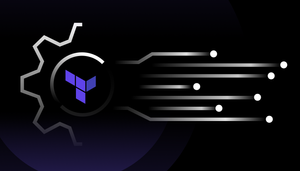Terraform Providers: A Beginner’s Guide

The Timescale Terraform provider has been released and is there to simplify your deployments with our cloud-native database for time series, events, and analytics.
This guide will introduce you to the concept of Terraform providers, explain their purpose and importance, and provide examples of popular providers. Additionally, we will discuss how to create your own provider and explore the benefits of using Terraform Providers in real-world projects.
Check out this blog post to learn how to use the Timescale Terraform provider to create and destroy Timescale services.
What Is a Terraform Provider?
A Terraform Provider is a plugin that allows Terraform to interact with various APIs, services, or platforms to manage external resources. Providers are responsible for understanding API interactions and exposing resources within the Terraform ecosystem. With a wide range of providers available, Terraform can automate infrastructure management across multiple platforms, making it a powerful tool for developers.
Some examples of well-known cloud vendors who have created their own providers to work with Terraform include:
- Amazon Web Services (AWS)
- Microsoft Azure
- Google Cloud Platform (GCP)
- DigitalOcean
- VMware
And now Timescale. 😎
Creating Your Own Terraform Provider
To manage resources on a platform that didn’t have a Terraform Provider, like Timescale, we had to create our own. To do this, we followed these steps:
- Learn Golang: Terraform providers are written in Go, so you'll need to have a good understanding of the language.
- Familiarize yourself with the Terraform Provider Development documentation: The official documentation provides a wealth of information on developing, testing, and maintaining your provider.
- Write the provider code: Implement the required resource management functions for the services you want your provider to interact with. These operations are Create, Read, Update, and Delete (CRUD).
- Test your provider: Write unit tests to ensure your provider works as expected.
- Build and distribute your provider: Compile your provider into a binary and distribute it to the Terraform community.
Benefits of Terraform Providers
I’ve mentioned some of the benefits of Terraform providers, like deployment speed and easy configurations, but here’s a summary of what they can do for you:
- Automation of infrastructure management: By using Terraform providers, you can automate the provisioning and state of your infrastructure, reducing manual effort and the risk of human error.
- Provision of differences (plan and apply): Terraform providers enable you to preview the changes that will be made to your infrastructure before applying them, ensuring that you know exactly what will happen when you execute your plan. This can prevent you from accidentally deleting an important server or database!
- Standardization of language: Terraform providers allow you to manage resources from multiple platforms using a single, standardized language (HCL), simplifying the development process and making collaborating with other developers easier.
Real-World Example
Let’s say you’re a developer working for a renewable energy company, collecting, managing, and analyzing IoT data from many devices with the help of TimescaleDB. The Timescale Terraform Provider could be instrumental in providing a streamlined and automated way to manage the infrastructure and resources associated with IoT data and Timescale.
Here are some ways in which a Terraform provider can assist in this scenario:
1. Infrastructure provisioning: Terraform can define and provide the necessary infrastructure resources required for handling IoT data and operating Timescale. This includes setting up servers, networks, storage, and other infrastructure components to support the data collection and storage process.
2. IoT device management: A Terraform provider can integrate with the IoT platform or services used by the energy company to manage the IoT devices. It can automate the provisioning and configuration of IoT devices, enabling developers to easily add, remove, or modify devices as needed.
3. Timescale setup and management: Terraform can be used to automate the deployment and configuration of Timescale instances, including defining the necessary schemas, tables, and indexes for storing and processing IoT data. This ensures consistency and repeatability across different environments.
4. Data pipeline orchestration: With a Terraform provider, developers can define and manage the data pipeline infrastructure required for ingesting, processing, and analyzing IoT data in Timescale. This may include setting up data ingestion mechanisms, data transformation processes, and integrations with other systems or analytics tools.
5. Production and test deployments: When you use Timescale in production, it is paramount to have an identical test deployment on which you can test new versions of your application. With the Timescale Terraform provider, it is very easy to copy the configuration of your production deployment and deploy it in your test environment.
Use the Timescale Terraform Provider
Overall, a Terraform provider—such as Timescale’s—provides a declarative and programmatic approach to managing the infrastructure and resources of your workflow. It simplifies the infrastructure management process, improves efficiency, and enhances the overall development experience for the developer.
Read our blog post to learn more about the Timescale Terraform provider and how to use it. New to Timescale and looking for a PostgreSQL++ cloud database that delivers optimal performance without breaking the bank? Sign up for a free 30-day trial (no credit card required).




